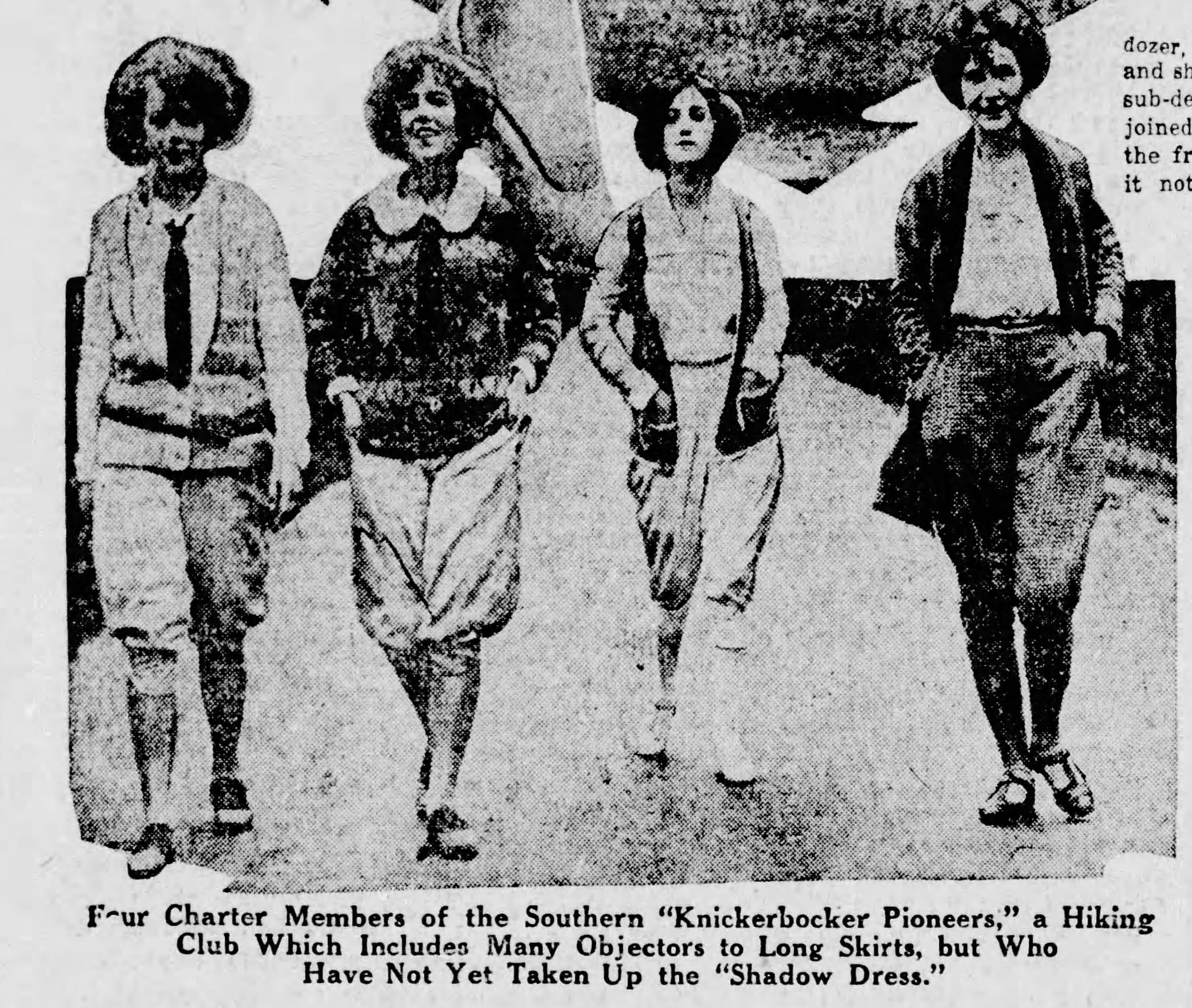Next month, the Common Ground History Book Group, LVA’s virtual non-fiction book club, will return for a discussion with Kathryn Miles, author of Trailed: One Woman’s Quest to Solve the Shenandoah Murders. As part of her in-depth investigation and discussion of the 1996 murders of Julie Williams and Lollie Winans near the Appalachian Trail, Miles touches on the past and present dangers women and other minority groups can face in outdoor recreational activities. She discusses Woodswomen, a group in which both Williams and Winans were active, created in 1980 to help women form a sense of community and appreciation for activities such as hiking, camping, and rafting.
Earlier in the 20th century, women faced similar challenges and came up with similar solutions. Despite more restrictive clothing, and more restrictive gender norms, female-only hiking clubs became popular with young Virginian women in the 1920s. In fact, in some part, the clothing and societal restrictions probably pushed them toward creating their own clubs. While co-ed hiking groups existed, formally and informally, it was all too easy to apply societal norms to the wilderness.
Individuals, both then and now, saw the “wilderness” as a way to get away from constraints of society—but when the constraint you were hoping to flee was gender dynamics, these groups did not often suffice, and many times they enforced those dynamics as men were seen to be stronger and more capable than women in such environments. A 1935 article in the Highland Recorder reports that the McDowell School Hiking Club girls “agreed to pack the lunches if the boys would carry it.”1
As Denise Mitten, a founder of Woodswomen, tells Miles, an all-female group wanted to allow women to be “in nature in the most positive sense” without the “pervasive sense of entitlement” that existed among many of the male guides, but even an all-female group could not totally remove themselves from these gender-based critiques.2 Newspapers reported on the clothing choices of female hikers. Some felt the activity was unladylike, while the opposite extreme felt that it was perfect for women because it was a “minor sport.”
A letter to the editor of the Nelson County Times remarked that that a hiking club was something foreign to him, and that the women of his day had scorned the possibility of “becoming sunburned and tanned.”3 Still others urged women to take up hiking as a means of slimming their figures down since men of the era seemingly “deplored the mere existence of plump girls,” according to one fashion writer.4
Many of the women who participated in these clubs were middle and upper class and their activities were often reported in the newspaper as a social activity. After all, in order to participate in leisure activities one needs time and money for leisure. For many, the idea that one might spend what little free time they had walking would (and may still) seem ludicrous. And like almost everything in Virginia at the time, the clubs were also segregated, putting yet another obstacle in the path of many.
But for more than a few, this was a way to experience nature and a sense of freedom even if safety concerns meant it had to be done in a group. The Rambling Gumps (a term that once meant “fool” but now can have homophobic connotations), a hiking club founded by Hopewell High School girls in 1925, wrote an entire poem chronicling the origin story of their group, inspired by Mother Nature herself. The idea (and name) was soon picked up by other Virginia High Schools including Hampton High School.
Sometimes the hikes were just a circuit around the local park, sometimes they were a mountain climb, but no matter the mileage these women were taking steps toward a future they envisioned for themselves.
Join us on online on Tuesday, September 20, 2022 at 6pm to discuss Trailed with author Kathryn Miles. Registration is free but required.
Further Reading
Newspaper Articles about Williams/Winans Murders and Response
- Our Own Community Press, July 1, 1996, page 1
- Our Own Community Press, May 1, 1997, page 9
- Lebanon News, June 8, 2016, page 4B
Articles about Women & LGBTQ+ Hikers
- Kathyrn Miles, On the Trail of a Cold Case, Blue Ridge Outdoors Magazine, August 2022.
- Rahawa Haile. Going Alone. Outside Magazine. April 2017.
- Aube Rey Lescure. At the Bend of the Road. Guerica, July 2021.
- Kathryn Miles. ‘When You Find My Body’: The Last Days of Geraldine Largay. Boston Globe Sunday Magazine, August 2016.
- Lucy Parks. How Being LGBTQ Affected My AT Thru-Hike. Outside Magazine, January 2020.
- Diana Reese. Grandma Gatewood survived domestic violence to walk the Appalachian Trail alone at 67. Washington Post, January 5, 2015.
Organizations for Women & LGBTQ+ Hikers
Footnotes
Header Image: “Now the ‘Shadow Dress’ – In Revolt Against Long Skirts.” Richmond Times Dispatch, November 16, 1923.
1“McDowell School News.” The Highland Recorder. April 12, 1935. https://virginiachronicle.com/?a=d&d=HR19350412.2.21&srpos=2&e=——-en-20–1–txt-txIN-%22hiking+club%22——-.
2Kathryn Miles, Trailed One Woman’s Quest to Solve the Shenandoah Murders (Chapel Hill, NC: Algonquin Books of Chapel Hill, 2022), 115.
3Old Rip. “Nelson County – Then and Now.” Nelson County Times, June 21, 1945. https://virginiachronicle.com/?a=d&d=NCT19450621.1.1&e=——-en-20–81–.
4Edward M. Ruttenber, “Embonpoint Not Fashionable; Hiking Displacing Medicines,” The Times Dispatch, July 25, 1926, https://www.newspapers.com/image/legacy/827755881/?terms=%22hiking%20club%22&match=1.









